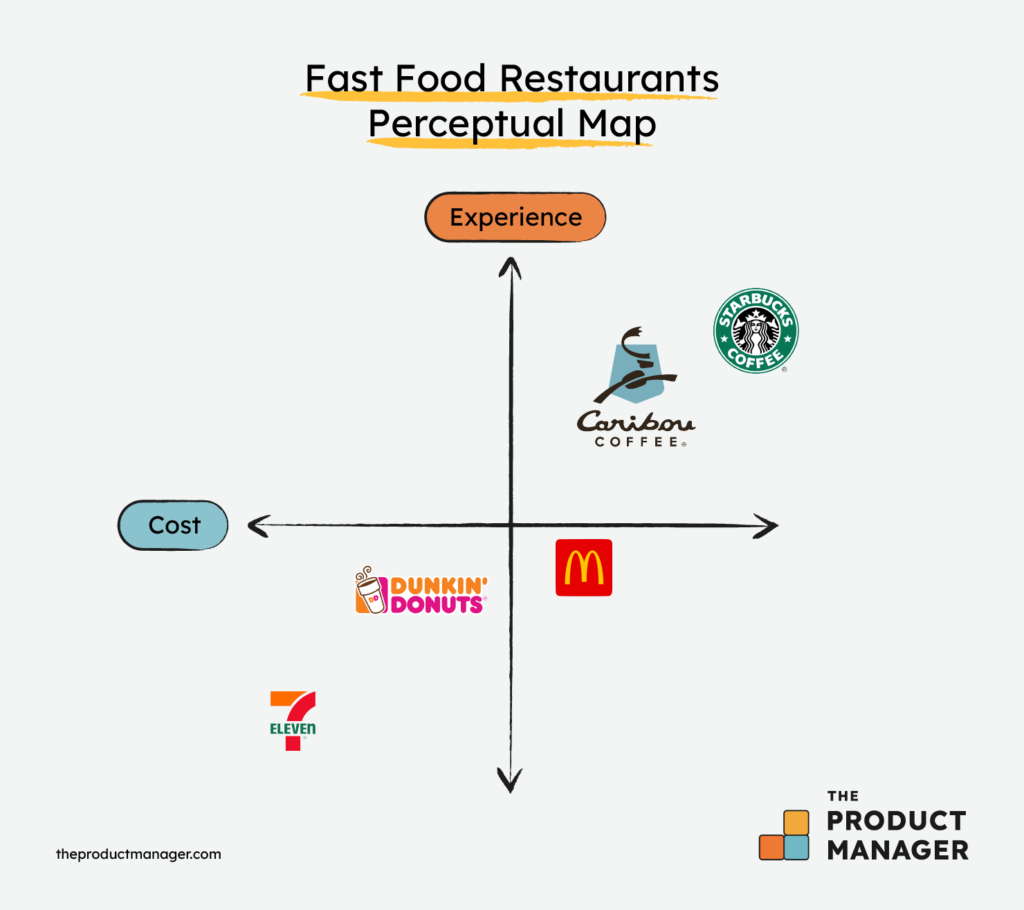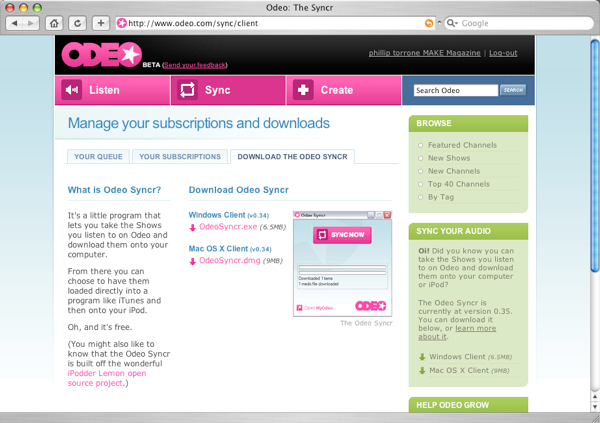Reaching product market fit is probably something that every startup product manager, founder, co-founder, and executive dreams about. But what are the steps that you take to reach your PMF? What is the product market fit strategy you need to employ for this?
As a senior PM who has just recently reached yet another product-market fit, I know a thing or two about the challenges you're facing. Here's what I've learned.
The 5 Key Elements of a Solid PMF Strategy
We have talked about product market fit quite a bit at The Product Manager.
You can read an overview of how to find product-market fit by my colleague Michael Pierce that covers a little bit of everything, including timing, steps, structure, and more.
Apart from this overview, we've also done a few deep dives into certain aspects of product-market fit, such as analyzing your product-market fit or covering some inspiring product market-fit examples. Today, I want to do another deep dive and help you form the strategy that helps you reach your product market fit.
Note: If you want additional reading materials on what good product-market fit means for digital startups, make sure to also read Marc Andreessen’s Playbook on this topic.
I will not give you a one-size-fits-all strategy, as there is never a single surefire formula. In real life, every product creates its own strategy based on its users, competitors, etc. Instead, I will talk about the five key elements that you need to work on to create your strategy.
These elements are the following:
Element #1: Understanding Your Market and Users
If you know little about your users and the target market where they “reside,” you are doomed to fail.
The logic is straightforward. If you don’t know your buyer persona, then you have no idea what their underserved needs and pains are. I mean, how are you going to ease their pains with great user experience and features (and hope that you did it so well that they were ready to pay for it) if you have no idea what these pains are?
So, the most important thing you need to figure out and add to your PMF strategy is deep and thorough knowledge about your users and market.
To do this, you will need to talk to them. Try to find where your typical users gather and ask questions or invite them for an interview. The places include:
- Physical Venues: If you want to sell mattresses online, go near a local furniture store, walk over to the mattress section, and talk to people there to understand what they care the most about when they select a mattress.
- Physical Events: If you are building a cybersecurity product, why not attend the infamous DEFCON conference and talk to the hackers and security experts over there?
(Pro tip: Don’t repeat my mistake, and make sure to turn your wifi off during your visit as the attendees will hack the hell out of your device.) - Online Communities: If your product is about email marketing, you can join one of the many digital marketing strategy forums out there and start socializing with people who do this kind of work daily. (Maybe, in addition to customer feedback, you can even do some word-of-mouth marketing campaigns there, too!)
- Specialized Interview Services: Finally, if your target users are really hard to find (e.g. CEOs or oil refinery engineers), you can consider using the services of specialized platforms (e.g. Respondent) that let you connect with these people for a fee.
Apart from user interviews that get you qualitative insights, you can also consider running questionnaires to get a bit quantitative data.
Regarding your market, what you need to do is good old market research. Market research is an umbrella term for a large set of activities that you can do to learn about your users and market.
Let me be more precise and list the three things you will need to figure out to help you shape your PMF strategy.
Understanding your audience market-wise
Instead of learning about their pains, here you care more about their demographics (location, language, age, etc.) and the communication channels that they like using (e.g. social media, TV, etc.)
Why you need this: On your path to PMF, You will end up running a lot of marketing campaigns to reach out to your target users and let them try your product. To create the right campaigns, you must understand your target audience’s preferences regarding channels, language, etc.
Identifying your key competitors
Let’s be honest; there is no such thing as a perfectly “blue ocean” market with zero competitors. Whatever you decide to build, there are at least a couple of other companies with the same thing in mind.
Why you need this: By understanding who the competitors are and what kind of products they offer, you can formulate your competitive positioning and build your key differentiators.
Understanding market trends
For most good markets, the new customer needs, as well as technologies and products catering to that market, are always changing.
For instance, if you want to build a product that runs on ChatGPT or a similar LLM (large language model), then you can neglect the service cost that you are paying for them now, as the market trend is taking us towards models that are either free (open source) or 10x (or even 100x!) cheaper.
Why you need this: The product you are building should be optimized for future market needs and market demand, not the current one. Otherwise, you might end up reaching PMF but fail to execute your post-PMF strategy successfully.
Element #2: Figuring Out Your Competitive Positioning and Value Proposition
Being a foodie, whenever a new restaurant opens in my city, I am among the first to visit them and try out their menu. Unfortunately for many of them, even if I liked the food, I often still consider the experience a disappointment for one reason—they were no different than other restaurants in the city.
This is what you would call a “lack of differentiation,” and it is one of the most common product anti-patterns.
What you really want is for your users to associate your product and brand with something unique about you in the market. For instance, when people ask me what Ray’s Pizza (my favorite pizza place in the city) is about, I immediately say that it’s the only place where they make authentic New York slices, and their Capricciosa with fresh mushrooms is just fantastic.
It is quite common in my city to open a pizzeria that cooks pizza the authentic Italian way. The owners of Ray’s Pizza understood that they could not compete with these Italian parlors and decided to differentiate themselves by making New York-style pizza.
Well, their strategy was successful—their shop quickly stood out among the crowd of dozens of pizza parlors in the city.
This same rule applies to digital products, too. You always need to have something unique and be different than your competition.
To find your differentiator, you first need to learn about the differentiators of others in your market. For this, you can create something marketers call a “perceptual map.” It is a two-dimensional chart that shows potential customers’ perceptions of different brands based on two key aspects.
The perceptual map of fast food chains, for instance, would look something like this.

Here, the two key criteria that we have used are “customer experience” and “cost of products/service.” As we can see, Starbucks is positioning itself as a high-end brand with great experience and high cost.
If we look closely, we will also see that the upper left corner is empty, as no restaurants get you great service for low costs. This is what you would call a “gap in the market” that nobody has filled yet.
Most likely, they did not have the necessary products, knowledge, or processes to enter that market segment. So, if you manage to figure out how to create a great customer experience at mid-level prices, you'll be able to carve out space for your business in the market.
If you do figure it out, then you would appear on the left side of Caribou on this chart and have solid positioning (that place with great service and decent prices) that sets you apart from others.
Element #3: Testing the Waters with an MVP and Iterating On Your Product and Model
There are a million ways to test if people want to buy and use your product without building it (e.g. user interviews, Wizard of Oz testing, etc.). However, the information you get from them is not enough for you to be confident in the success of your product.
The most reliable way to test your product is always actually building it and launching it in the market. But building and launching a finished product consumes a lot of time and money, and, if it fails, you will end up incurring a significant financial loss.
So, instead of building the final product, your product development team builds the MVP (minimum viable product) version first. This version will be much more basic and only contain:
- Key functionality that covers the main use case for your customer base (e.g. storing files in the cloud for Dropbox).
- Key differentiators that let you stand out among your competition (e.g. security-first architecture of Telegram messenger).
- Basic/Must-have feature set under the Kano model—the absence of which will make your product unusable (e.g. the ability to sign up or change a password).
Thanks to using MVPs, you will be able to do a couple of relatively lightweight build-measure-learn cycles before you finish validation and understand that your product idea is viable and worth continuing to invest in.
It is also at this phase when you are most likely to pivot if you understand that your product is not getting the traction you were hoping for. Pivots are actually much more common than you might have thought. Twitter, for instance, started as Odeo.

It was a podcasting platform that was failing to compete with iTunes. So, the team behind it decided to pivot and launch the internal tool that they used for their own communication with the outside world.
If you follow the news, you might have heard that our beloved blue bird is going through another pivot. This time, it is renamed to X.com and Elon Musk’s vision is to convert it into a super app that is capable of doing everything from messaging to shopping and payments (just like WeChat).
Element #4: Knowing How to Measure Product Market Fit by Selecting the Right Metrics
You can’t really tell if you have successfully reached your PMF unless you measure it. But the problem is that PMF is a bit of a vague concept, and it is not always easy to quantify it directly and have a single PMF metric that you can measure and compare with benchmarks.
As a result, we normally end up relying on a set of secondary related metrics, the increase of which will signal us that we have most likely reached our PMF.
The metrics in question are:
The Sean Ellis Test Score
This is a simple questionnaire where we ask people how disappointed they would be if they could no longer use your product. After gathering statistically significant data, you would then count the number of responses where your users would be very disappointed if you were gone.
If this number is above 40%, then, according to Sean Ellis himself, you have reached your product-market fit.
Slack is probably the most famous user of this method to check for PMF.
Your Retention and Churn Rate
Another great indication that you have reached a product market fit is having a flat retention curve and your churn rate is at a manageable rate. This means that people like your product so much that they are using it on a regular basis, and very few of them decide to let you go.
Your Engagement Rate
While retention is a sign of continuous usage over time, engagement rate shows how active your users are over a certain period of time. The higher your engagement, the higher the likelihood that you've reached a product-market fit.
To calculate engagement, you first need to determine your key action. Usually, it is the usage of a product feature that covers the main pain points of your target customers (e.g. music streaming for Spotify).
As soon as you've identified that action, you can check how many users are performing it every day/week/month (DAU, WAU, MAU), and how many actions a single average user is performing every single day.
Element #5: Determining your Post-PMF Product Strategy
Although this might sound counter-intuitive, you should ensure that you have at least a high-level understanding of what you will do as soon as you have reached your PMF.
The reason is that you will be facing much harder challenges as a product with a market fit, and it is a good idea to start preparing for your post-PMF phase early on.
In particular, you should start thinking about these key challenges that you will be facing soon:
- Scaling and infrastructure: Supporting 1,000 paying users and serving 10s of millions are vastly different in terms of the infrastructure that can take on that load.
- Figuring out monetization: Have you figured out how much you want to charge your users, and what kind of pricing model you would use?
- Fixing activation and acquisition: Your activation flows are most likely in a horrible state in the early phases of your product lifecycle and you should start thinking about fixing them.
Finally, you should start thinking about the future expansion of your team. Hiring too many people too quickly is almost never a good idea, so you should have the proper plan and timing for scaling your human resources, too.
Reaching PMF Is Not As Hard As You Might Think
Ok, it's definitely hard. But, if you follow the iterative process and are able to do quick build-measure-learn cycles, you will end up iteratively improving your business model, acquisition strategy, retention, and engagement and end up in a situation when reaching your PMF is just a matter of time.
This guide was one of the many we have on managing startup products. For more like this, make sure to subscribe to our newsletter!


